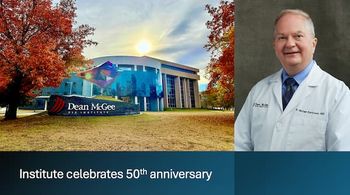
PRK versus femto-LASIK: Optical quality
PRK seems to be associated with better optical quality 3 months postoperatively compared with femto-LASIK. The factors leading to negative effects in femto-LASIK might be the creation of an interface and the potential for development of dry eye, said Eric Perez-Campagne, MD.
Paris-PRK seems to be associated with better optical quality 3 months postoperatively compared with femto-LASIK. The factors leading to negative effects in femto-LASIK might be the creation of an interface and the potential for development of dry eye, said Eric Perez-Campagne, MD.
Dr. Perez-Campagne and colleagues from the Rothschild Foundation and CEROC, Paris, compared the optical quality achieved following PRK and femto-LASIK to correct low and moderate myopia in a prospective comparative study. They used double-pass aberrometry (OQAS, Visiometrics), which measures the objective optical quality, to assess the visual quality.
Using this technique, infrared laser point light enters the eye through a 2-mm pupil and is focused on the retina. The light exits the eye through a 4-mm pupil. This allows the investigators to obtain the point-spread function (PSF), according to Dr. Perez-Campagne.
The OQAS accounts for the aberration and scatter and it provides the simulated visual acuity at different levels of contrast and the modulation transfer function (MTF) cut-off frequency, which represents the attenuated contrast of the retinal images. In addition, the investigators also obtained the objective scattering index (OSI), which quantifies the ocular scatter, and the Strehl ratio, which is the ratio between an aberrated PSF and the ideal PSF, he explained.
All patients were less than 40 years of age and had mild to moderate myopia with cylinder that was 1.75 D or less. The best-corrected visual acuity was 0.1 logMAR or better. The optical quality was measured preoperative and at 1 and 3 months postoperatively.
The study included 49 patients (98 eyes), of whom 28 underwent PRK and 21 underwent femto-LASIK. The spherical equivalent and the sphere differed significantly between the two groups, as did the Strehl ratio.
“At the 3-month examination, there was a significant difference between groups for the Strehl ratio and the objective scattering index compared with preoperatively,” Dr. Perez-Campagne said. “The PRK group had better results compared with the femto-LASIK group. The intragroup comparison showed significant differences in the PRK group for all data at 1 month and for the cut-off frequency at 3 months. The femto-LASIK group had significant differences in the objective scattering index at 1 and 3 months.”
The objective scattering index increased more in the femto-LASIK group, possibly because of the interface or because of surface abnormalities. The MTF cut-off frequency and Strehl ratio worsened in both groups postoperatively.
Both groups had increased scattering 1 month postoperatively; however, the femto-LASIK group had more scattering late postoperatively.
The contrast sensitivity decreased in both groups, but the decrease was greater at 1 month compared with 3 months postoperatively.
“Based on our 3-month results, PRK seems to be associated with better optical quality, the Strehl ratio was significantly larger, and the scattering remained almost unchanged in the late postoperative period,” he concluded. “The creation of an interface and the possibility of development of dry eye after LASIK should be investigated.”
Dr. Perez-Campagne has no financial interest in the subject matter.
For more articles in this issue of Ophthalmology Times eReport,
Newsletter
Don’t miss out—get Ophthalmology Times updates on the latest clinical advancements and expert interviews, straight to your inbox.


















































.png)


